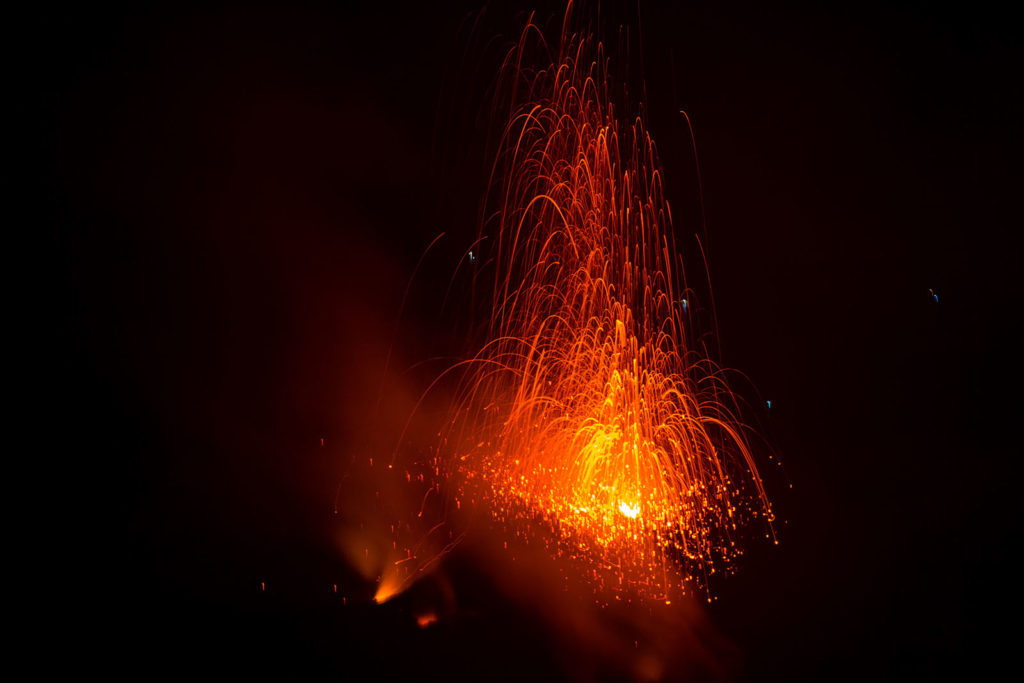The term “Strombolian” eruption means an activity formed by explosions of low and medium energy, with the launch of bombs and incandescent lapilli around the crater area. 
Periodically, this activity is also interspersed with the emission of lava flows along the slopes of the
volcano
.
After a much longer period, some hundreds of years, there can even be very intense explosive activity, which affects a large part of the summit of the volcanic structure. This is the typical activity of Stromboli, and this definition is applied to hundreds of other volcanoes around the world.
Stromboli’s summit craters often change physiognomy and layout. It is typical of this activity that, after a period of lava flow, the plateau where the craters emerge collapses slightly due to the emptying of the superficial magma chamber that feeds into them. Usually there are 5-6 eruptive mouths, aligned north-east and south-west; therefore, we can distinguish between a “central crater” and the north-east and south-west craters. Over the last twenty years, this activity has taken place in 2002-03, 2007 and 2014. The type of activity is distinguished depending on the frequency of the explosive events.
The basic activity is “puffing”, i.e. small puffs of steam from all the craters; each puff occurs every 3-4 seconds. When some gas accumulates under the mouth of the volcano, it can cause a jet of steam up to 30-40 metres tall, which may also be reddish in colour. Usually, but depending on the volcano’s pattern in a certain period, this type of activity takes place every 15-20 minutes, often from one of the outermost craters.
Then there is the real explosion: below the crater several bubbles of gas can accumulate from the depths, coming together to form bubbles that are a little bigger. At some point the magma is no longer able to contain them and explodes bringing with it scraps of lava in the form of bombs (if larger than 6 cm) and lapilli (1-6 cm). These types of explosions are the most common and most spectacular and have an interval of 10-20 minutes depending on the volcano’s pattern of activity. In fact, there are periods in which the volcano is “more active” due to a recent rise of magma from the depths, and periods in which it is more “relaxed”, perhaps after a slightly bigger eruption, such as the escape of lava flows.